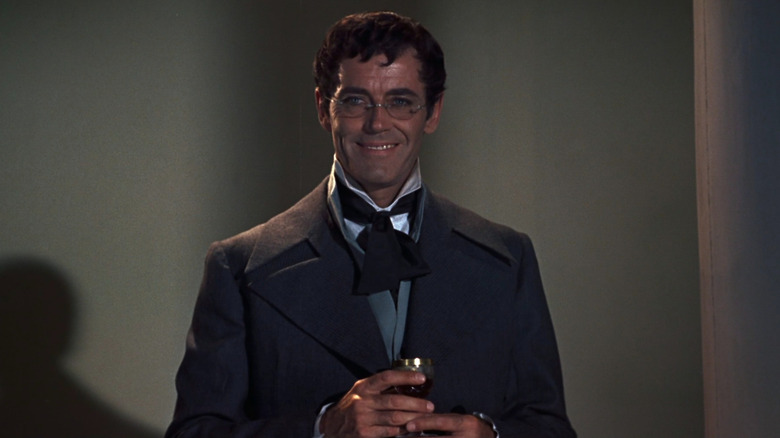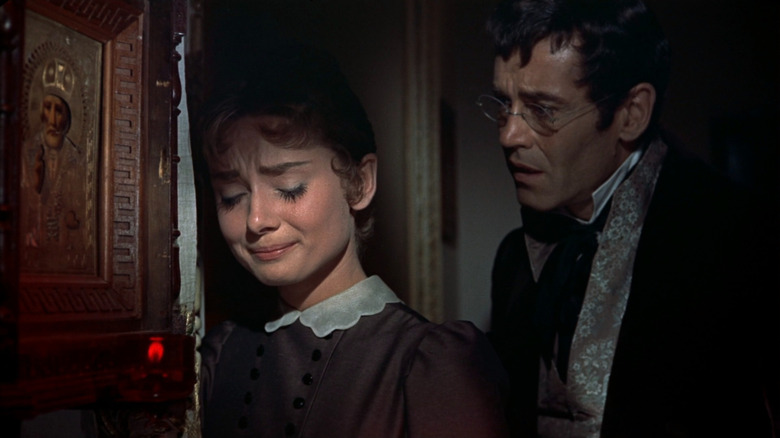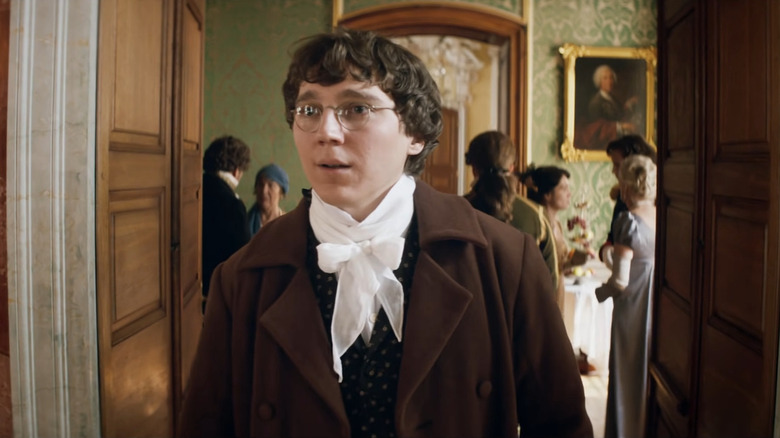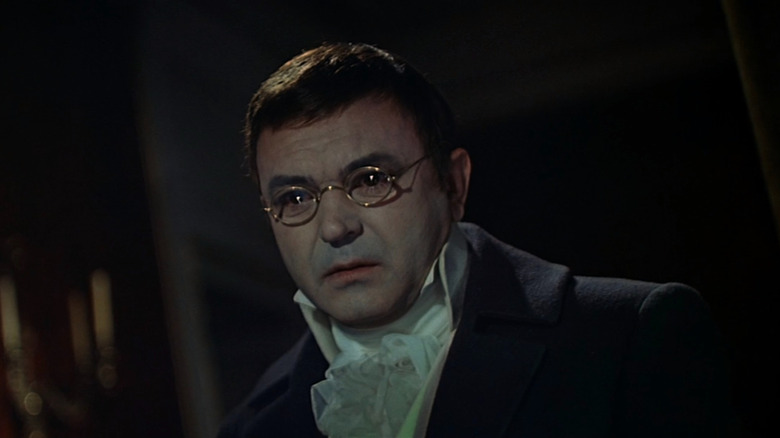Henry Fonda Spent His Time On War And Peace In A 'Constant Struggle' With The Producers
This past year, we've had a lot of discussions about whether Brendan Fraser should have been cast in Darren Aronofsky's "The Whale" due to him requiring a fat suit to play the role. On the one hand, we are all happy to see Fraser be given a lead role by a major director, which hasn't happened in many years. On the other, it is yet another entry on the long list of roles that should presumably have gone to fat actors but didn't. The likelihood that a central character is explicitly written to be large is already incredibly small, but if all those parts are getting taken by actors who need padding and prosthetics to make themselves appear large, when else are fat actors going to be given opportunities to lead films?
As someone who is indeed fat, I often find myself frustrated by this, but I also understand that movies need to be sold to an audience. Big name actors help do that, and unfortunately, their names are much bigger than their bodies. But, of course, you can't have fat stars without giving them chances, and then we end up in this endless cycle that is so difficult to break.
One of the more famous large characters in literature is Pierre in Leo Tolstoy's titanic "War and Peace," and when Hollywood decided to finally make their epic adaptation from director King Vidor, the choice for Pierre was ... Henry Fonda. He is an extraordinary actor, but he is about as lean as a person can get. Fonda was fully prepared to take on the role and do the customary uncomfortable padding to play Pierre, but it turned out the studio didn't just not want to hire a fat actor. They didn't want Pierre to be fat at all.
Turning a character role into a leading man
By 1956, Henry Fonda had been one of Hollywood's biggest stars for nearly two decades, but his stardom was not built on him being a cool, charming adonis. He was an everyman, much like James Stewart. In temperament, he makes quite a bit of sense as the shy and awkward Pierre, but the character's size is a major part as to why he feels uncomfortable with people, which Fonda doesn't have. He was going to try his best to look like Leo Tolstoy's character, but producer Dino De Laurentiis wanted a dashing leading man, as Fonda recalled in the book "The Films of Henry Fonda" by Tony Thomas:
"I knew I was physically all wrong for Pierre, but I decided that, with the right spectacles, some strategically placed padding and my hair combed forward, I could pass. Then it seems they didn't want a Pierre who looked like Pierre. One who looked like Rock Hudson is closer to what they had in mind. They went into a nervous shock when they saw my original make-up. The padding went immediately –- over my anguished protests. And from that point on, it was a constant struggle between the producer and me as to whether or not I'd wear the spectacles. I won about half the time –- usually when he was nowhere near the set."
De Laurentiis was clearly more interested in creating a Hollywood blockbuster, and Fonda wanted to serve the material. The end result falls somewhere in the middle, and for as much as Fonda gives himself over to the role, there's still something off about this rail-thin movie star at the center. Beyond Fonda, the film itself finds itself caught between the two worlds, and Pierre probably best exemplifies that divide.
The same tactic, 60 years later
Back in 2016, the BBC produced a six-episode miniseries of "War and Peace," which starred Lily James as Natasha. We are now 60 years away from the major Hollywood production and have migrated over to television, where the burden of bankable names is far less burdensome. So, who did they decide to cast as Pierre in this adaptation directed by "Wild Rose" director Tom Harper? Would it actually be a fat actor this time around? Nope. They cast Paul Dano, another rail-thin name actor and did absolutely nothing to make him appear any larger than he actually is.
Paul Dano is one of my favorite actors working today and am ecstatic whenever he is given a leading role. Like Henry Fonda before him, the idea here is to use his slightness as the source of his insecurity, but the idea of someone of his size fading into the background has been told time and again. This once again misses out on the opportunity of portraying a character who may take up a bit of physical space but doesn't take up the space in the minds of the people around him. You would hope that 60 years of further understanding body image and diversity of body shapes would alter how we want to see things on screen, but apparently, we haven't really progressed at all there.
Leave it to the Russians to get Tolstoy
If you were to ever watch just one adaptation of "War and Peace" in your life, the obvious choice would be Sergei Bondarchuk's 431 minute, four part epic from 1966. This was the most expensive film ever made in the Soviet Union at the time, and it is clear that a major reason for making it was basically to put any massive Hollywood blockbuster to shame in terms of scale. Bondarchuk not only co-wrote and directed the film, but he also took on the role of Pierre.
Now, I wouldn't exactly call Bondarchuk fat, but he certainly has more meat on his bones than Henry Fonda, Paul Dano, or other folks who have taken the role over the years, like Anthony Hopkins on television in the 1970s or Josh Groban on Broadway in the musical adaptation "Natasha, Pierre, and the Great Comet of 1812." Considering "War and Peace" is one of the most seminal literary works to ever come from Russia, it makes sense that they would be more in favor of making sure a core component of one of the lead characters would be translated to their grand cinematic adaptation. For Hollywood, that is often a bit too much to ask.



